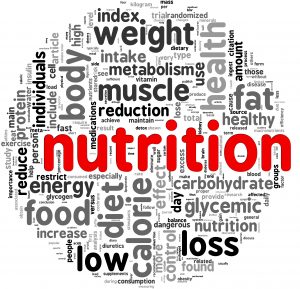Posted on June 01, 2017 by Jenny Cromack
To lose, gain or maintain weight it is important to know how many calories you should be consuming. So this blog, how many calories should I be eating, looks at just that but we’re going to try to keep things simple.
- For weight loss you should be expending more energy (energy expenditure) than calories you are consuming (energy intake).
- To put on lean muscle mass (hypertrophy), your energy intake should be higher than your energy expenditure.
- To maintain your weight your energy expenditure should equal your energy intake.
Think of your calorie balance like a see-saw….put too much in at the ‘energy intake’ end, and not enough at the ‘energy expenditure’ end and the see-saw will tip upwards (just like the numbers on the scales or skinfold calipers). This is also true in reverse, put too little in on the ‘energy intake’ end, and more on the ‘energy expenditure’ end and the see-saw will tip downwards.
There are several simple steps I am going to share with you which will help you know how many calories you need to consume.
Step 1 – Calculate Your Basal Metabolic Rate
Basal Metabolic Rate (BMR)
Your BMR is the sum total of the minimal activity of the tissue cells of the body under steady state conditions (Barasi, 2003). Simply, BMR is the number of calories you would need to consume to maintain body weight if you did nothing but lie down all day (wouldn’t that be lovely!)). This is not taking exercise or every day activities into consideration. Here is what you need to simple calculate your individual BMR:
Males
10-17yrs BMR = 17.7BM + 657
18-29yrs BMR = 15.1BM + 692
30-59yrs BMR = 11.5BM + 873
Females
10-17yrs BMR = 13.4BM + 692
18-29yrs BMR = 14.8BM + 487
30-59yrs BMR = 8.3BM + 846
BM = Body mass in kg.
There are other calculations around, but the calculation above is quick and easy!
Step 2 Physical Activity Levels (PAL)
Physical Activity Levels
PAL is estimating how many calories an individual would expending during an average day, including both occupational activity and non occupational activity.
BMR × Pal = Total Energy Requirements (TER) (kcal)
| Non-Occupational | Occupational | |||||
| Light | Moderate | Heavy | ||||
| Male | Female | Male | Female | Male | Female | |
| None Active | 1.4 | 1.4 | 1.6 | 1.5 | 1.7 | 1.5 |
| Moderately Active | 1.5 | 1.5 | 1.7 | 1.6 | 1.8 | 1.6 |
| Very Active | 1.6 | 1.6 | 1.8 | 1.7 | 1.9 | 1.7 |
Example
22yr old 80kg male
BMR = 1,900
PAL = 1.8
TER = 1,900 × 1.8 = 3,420
From this you can work out how many calories you need to aim for to reach you end goal!


